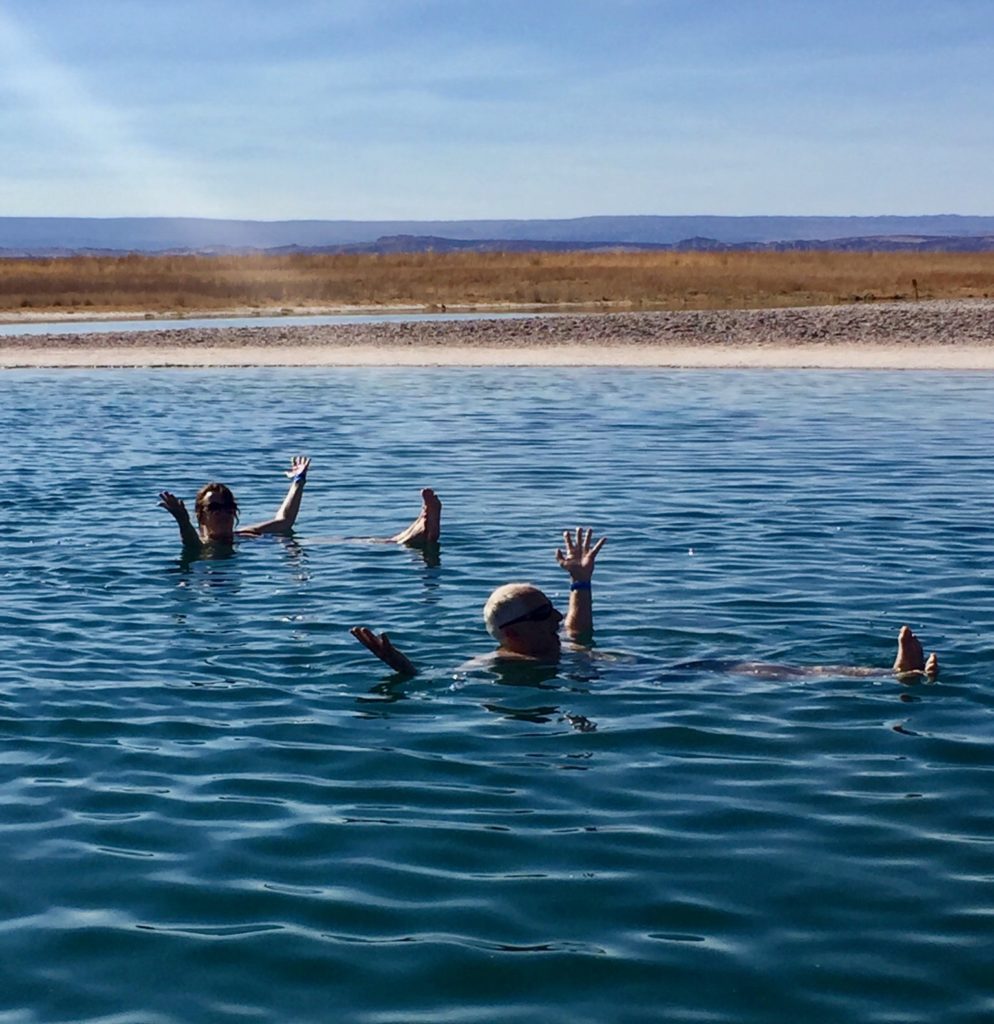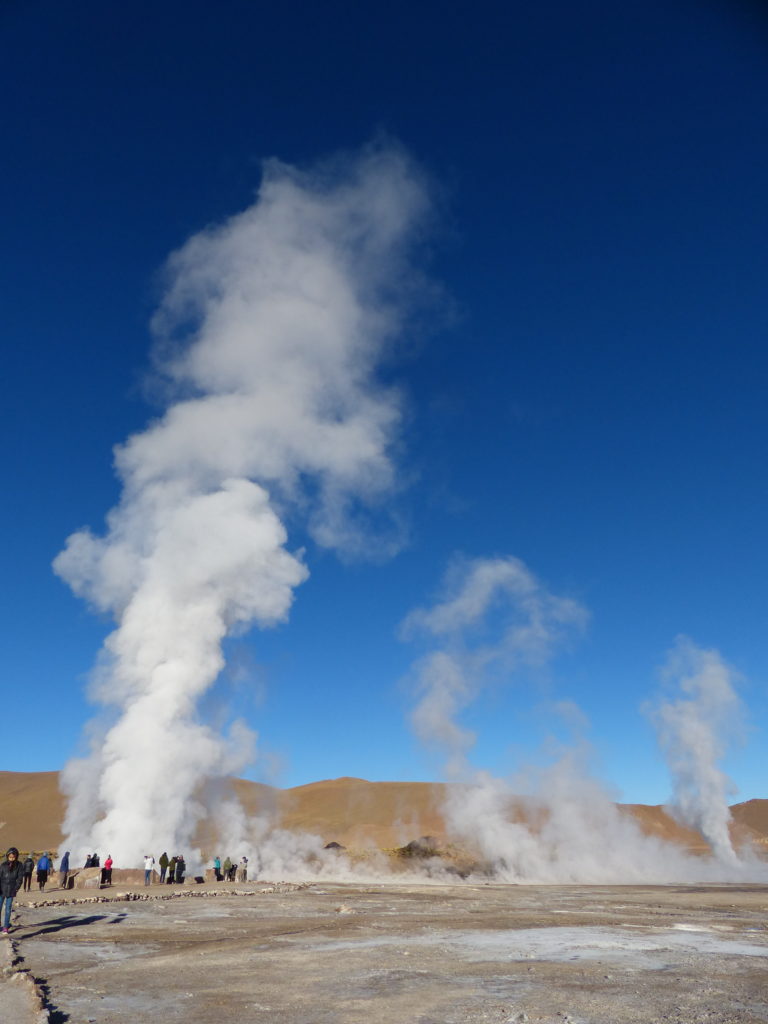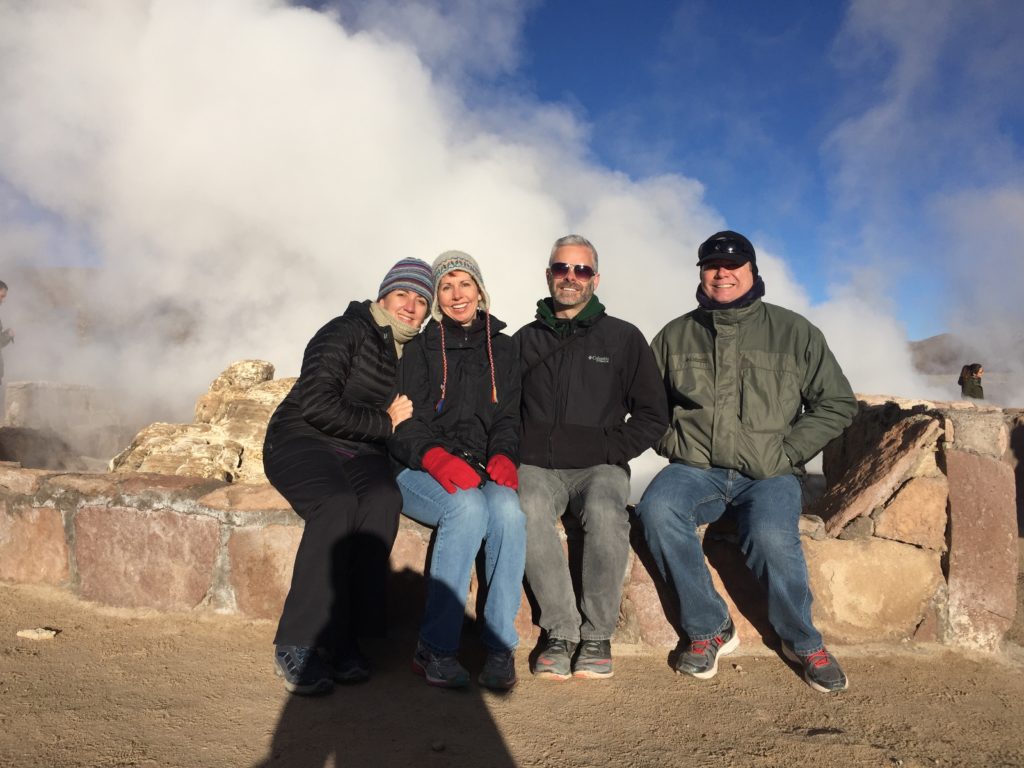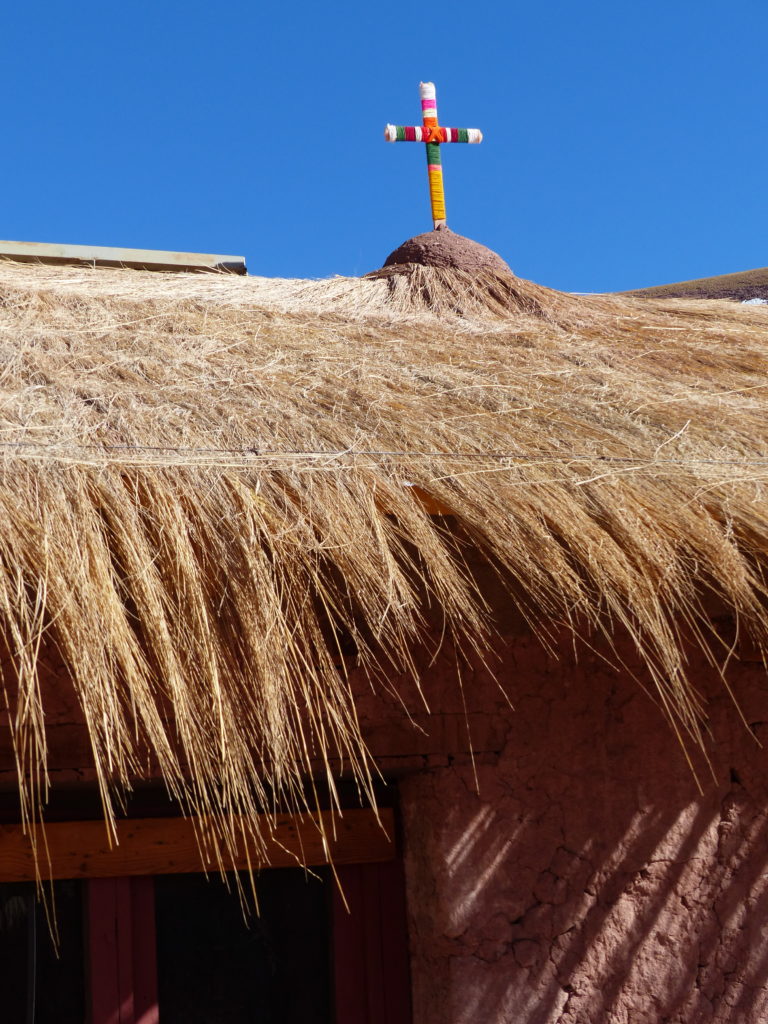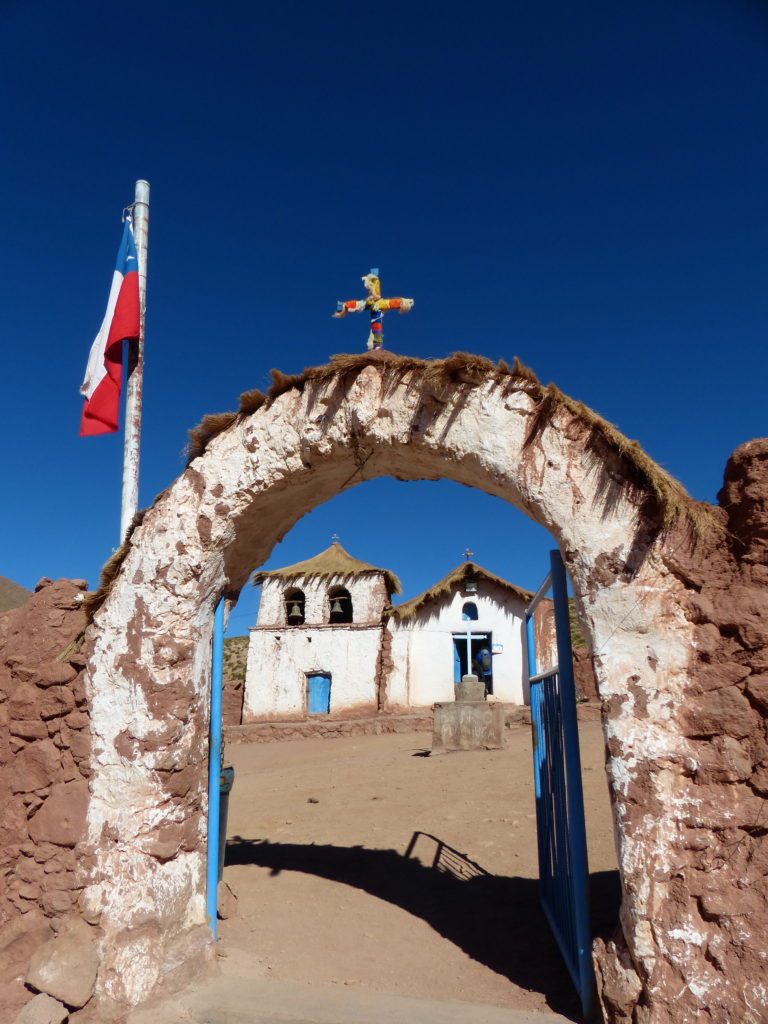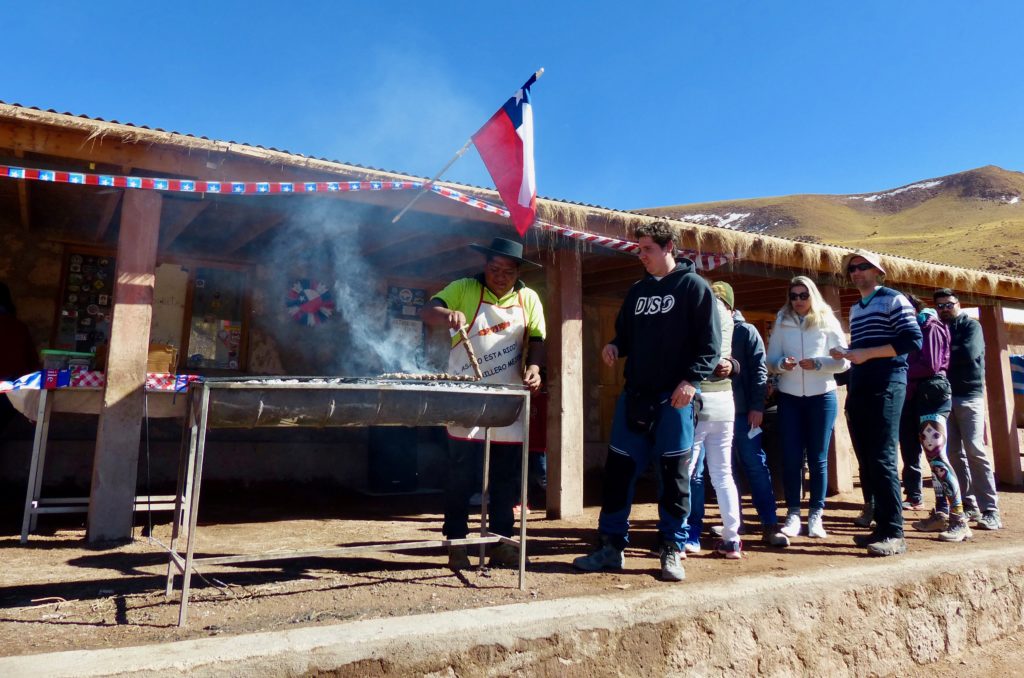At 4:30 a.m., I drowsily sipped a cup of coffee and hoped today’s attraction – the world’s highest geyser field – would be worth the sleep deprivation. It did not disappoint.
When our group tumbled out of the bus at 4,300 meters (14,100 feet) above sea level, the sun remained tucked behind the surrounding mountains and we were grateful for our long underwear and wooly hats. Our guide, Felipe, warned us not to wander too close to the steamy plumes and hissing puddles, noting that two tourists had lost their lives in the scalding water.
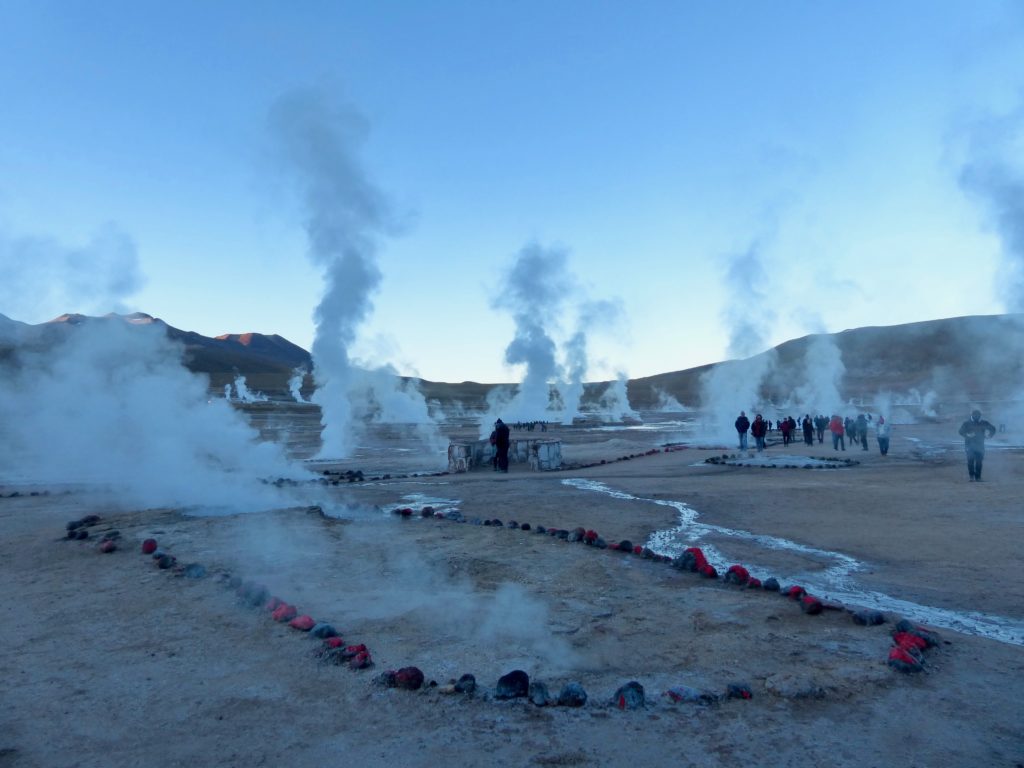
He pointed out a nearby mountain, which resembled the profile of an old man looking up to the sky, and told us indigenous people named this area “grandfather who cries.”
The geysers and fumaroles form when cold water comes in contact with hot rocks deep below the earth’s crust. The pressure blasts hot water up through underground conduits to erupt at the surface, up to 10 meters (about 33 feet) high. Early morning chilly temperatures ensure the most dramatic billowy reactions as the 80+°F water bursts out to hit the icy air.
I had never seen a geyser in person before, so the ethereal landscape felt particularly special. As the sun rose, the sky turned from grey to cerulean. Bright sunlight illuminated the green and rust colors of the mineral formations and created silhouettes of the tourists against a backdrop of vertical clouds.

The gurgling, whistling, bubbling, whooshing sounds further contributed to a surreal, magical experience.
I asked whether anyone had ever tried to tap the geothermal energy here, and Felipe said that was a touchy issue. Many locals have been protesting the government’s quest for geothermal power since a 2009 blowout during the testing of an old geothermal power well, he said.
According to Wikipedia (and confirmed on several other websites),
In September 2009, a failed prospecting drill for geothermal exploitation in the (1960’s) Nº 10 well near the El Tatio area, by the Geotérmica del Norte consortium – formed by the Chilean state owned ENAP and Codelco Mining companies in association with Italian state owned ENEL – caused a 60-meter high artificial fumarole to develop, with the company unable to seal it for several weeks. The eruption of the fumarole was followed by strong subterranean noises, and a notable decrease of all but the most active geysers in the area.
A 2015 article by the Inter Press Service News Agency quotes indigenous people, who have mixed feelings about geothermal power exploration.
The Alto El Loa Indigenous Peoples Council got ENAP and ENEL to sign a series of agreements for the implementation of social development projects in the local communities in compensation for the impact of the geothermal project, and especially the power line.
For the inhabitants of Alto El Loa, scattered in remote areas in the Atacama desert, if the project is sustainable and benefits their communities, it will be a positive thing. But they say they are concerned that their way of life may not be respected.
“I would like to see more help, and if this is a good thing, then it’s welcome,” Luisa Terán, a member of the Atacameño indigenous group from the village of Caspana, told IPS. “Sometimes we feel a bit neglected and isolated.
“But it has to come with respect for our traditions, and it is our elders who are demanding that most strongly,” she added.
Others, however, reject the project as “anti-natural” and “violent” towards the local habitat.
“If you hurt the earth, she will in one way or another get back at you,” tourist guide Víctor Arque, of San Pedro de Atacama, a highlands village 290 km from Ollagüe, told IPS. “It can’t be possible to drill kilometres below ground without something happening.”
For now, the project is on hold, and more than 100,000 visitors each year can enjoy the sights and sounds of El Tatio geyers like we did.
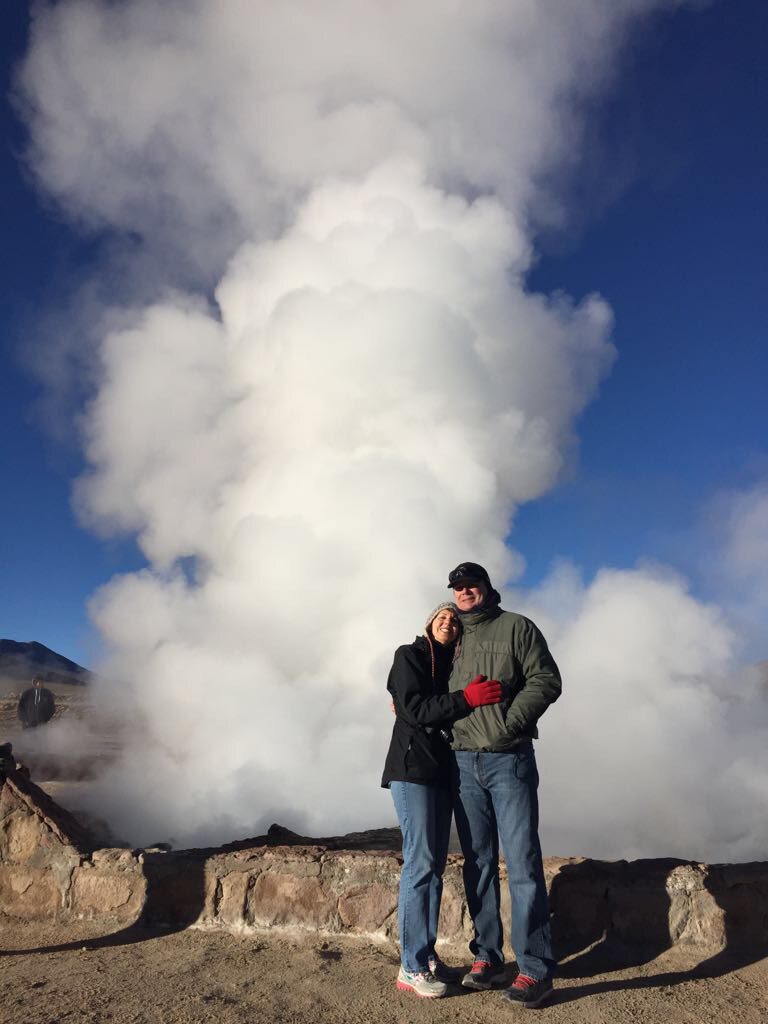
On our way back down the mountain, we stopped at the tiny Andean village of Machuca. About 20 houses built of adobe and straw line a path leading to stairs up the hill to a small church. An LA Times article says the families of Machuca subsisted on terraced farming for generations, but the climate has become too dry. Today, residents raise llamas and barbecue them on skewers – a treat known as anticucho – to sell to the tourists traveling between the geysers and San Pedro.
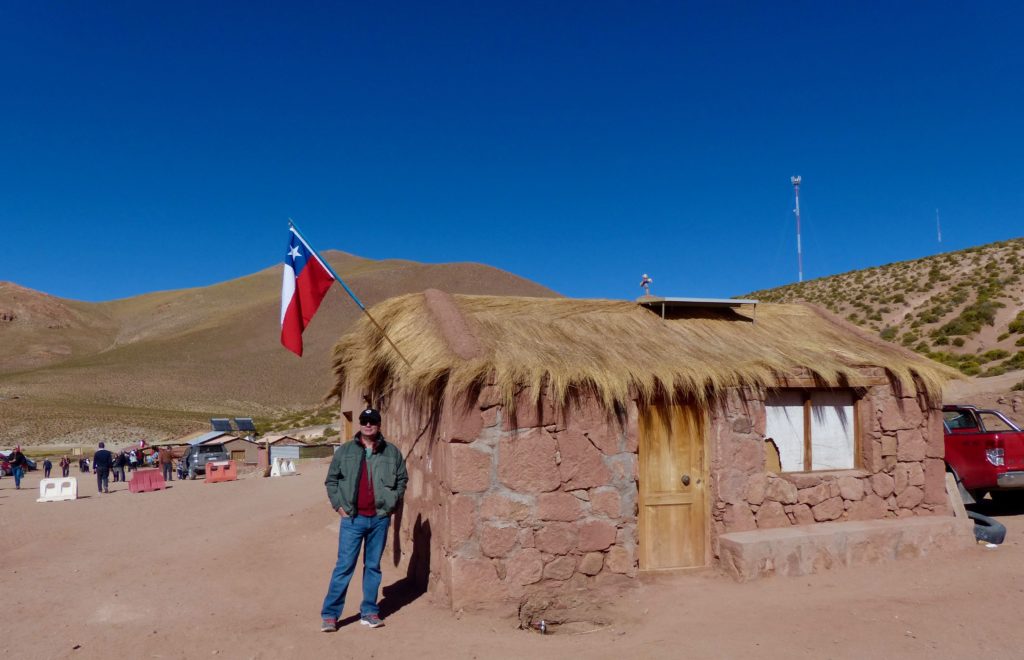
We had booked an afternoon of salt lake swimming in Laguna Cejar, but Tony and I spent the afternoon reading on the hotel terrace instead. After traveling to Jordan in 2014 and swimming in the Dead Sea, we felt like, “been there, done that.”
Craig went but only waded. Nancy and Jim said they had a great time thrashing about in the lake.
